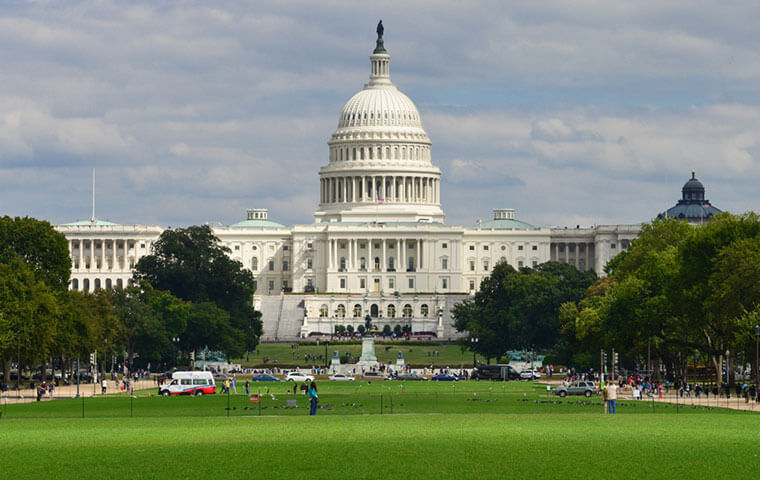 Even passing a stopgap “continuing resolution” this fall may prove to be a challenge. Image: Orhan Cam/Shutterstock.com
By: FEDweek Staff
Even passing a stopgap “continuing resolution” this fall may prove to be a challenge. Image: Orhan Cam/Shutterstock.com
By: FEDweek StaffWith the House in recess through September 9 and the Senate set to follow after this week, the bulk of work toward providing funding for federal agencies in the fiscal year starting October 1 remains unfinished.
While the House had set a goal of passing all 12 of the regular appropriations bills before the recess, it achieved that with only six—although the other six have passed the committee level. The Senate has moved seven bills through committee but has held floor votes on none.
With the White House having threatened to veto each of the bills the House approved, there are only slim chances that agreements can be reached on many, if any, of them in the three working weeks Congress has scheduled in September before recessing again until after the elections.
Even passing a stopgap “continuing resolution” in that time — the typical course in such situations, often extending current funding authority until sometime in November — may prove to be a challenge if House Republicans insist on including the sorts of policy riders they have attached to the appropriations bills.
Among those provisions is one in the general government bill to require the administration to produce a plan for reducing federal office space where the utilization rate is less than 60 percent, based on 150 usable square feet per person.
The bill also would bar investments through the TSP mutual fund window in funds that use environmental-social-governance criteria in selecting investments — which the TSP has said would cause it to drop that feature; ban enforcement of a Biden administration order that expanded paid time off for federal employees to vote or to perform roles such as poll worker; end DEI programs in federal agencies; ban coverage of gender-affirming care in the FEHB program; and ban reimposition of COVID-19 vaccine or mask mandates in the federal workplace.
Meanwhile, by calling off a planned vote before the recess on the general government bill, GOP leadership stalled action on plans by Democrats to offer amendments to put into law a ban against a future Schedule F excepted service category, and to strip out the ban on DEI programs.
A similar Schedule F amendment has been proposed for a separate bill, the DoD authorization, when it comes to a floor vote in the Senate. A proposed bipartisan amendment to that bill meanwhile would set a general cap on telework by federal employees of four days per biweekly period government-wide. Separately, the House-passed appropriations bill covering DoD would generally ban all offsite work at that department.
Senate Eyes Vote to Pay Federal Employees Working Unpaid
Series of Bills Offered to Address Shutdown’s Impact on Employees
Public Starting to Feel Impact of Shutdown, Survey Shows
OPM Details Coverage Changes, Plan Dropouts for FEHB/PSHB in 2026
Does My FEHB/PSHB Plan Stack Up? Here’s How to Tell
2025 TSP Rollercoaster and the G Fund Merry-go-Round
See also,
TSP Takes Step toward Upcoming In-Plan Roth Conversions
5 Steps to Protect Your Federal Job During the Shutdown
Over 30K TSP Accounts Have Crossed the Million Mark in 2025

